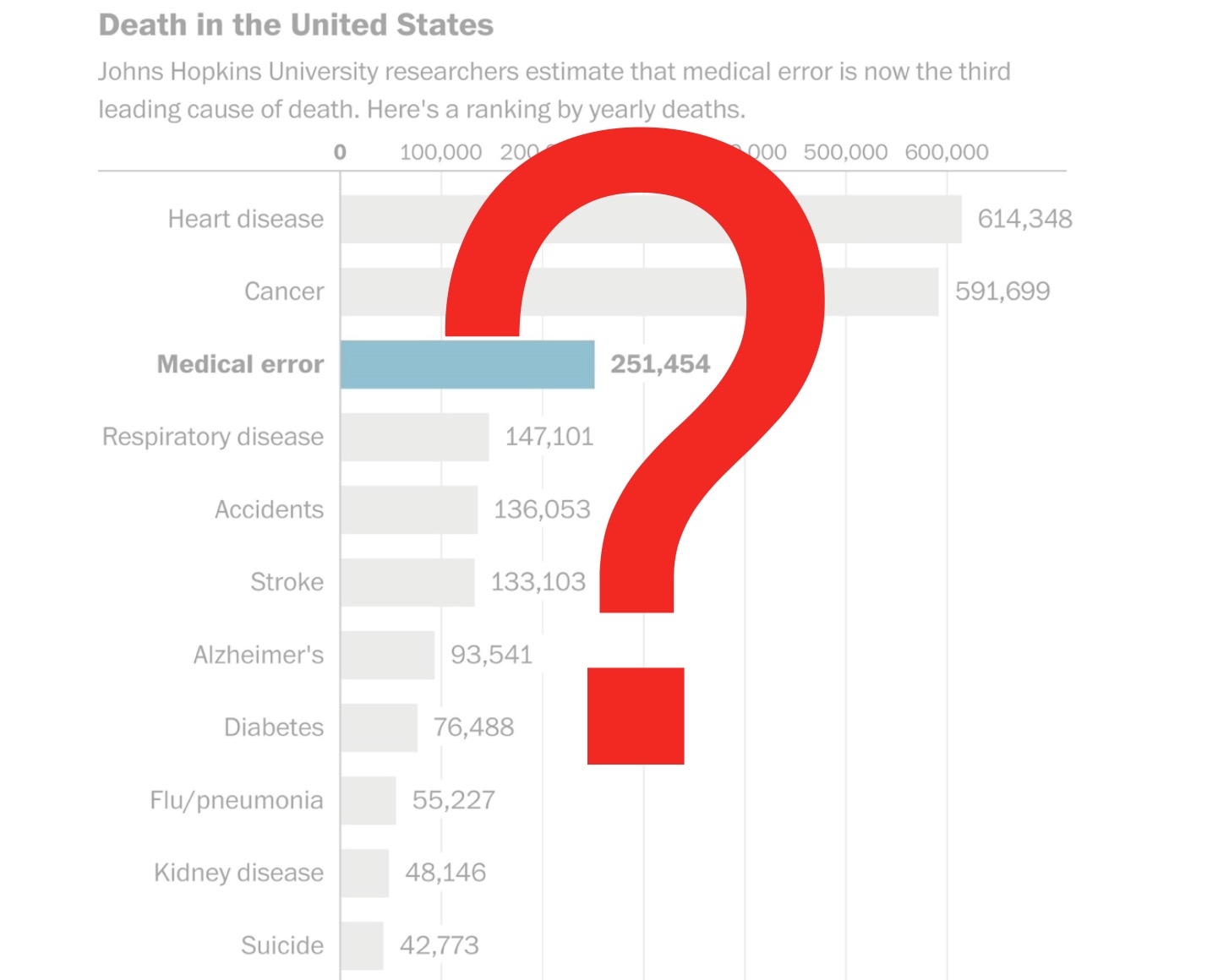 The World Health Organisation published it’s 10 facts on patient safety this year (see here). Of note they indicate
The World Health Organisation published it’s 10 facts on patient safety this year (see here). Of note they indicate
‘There is a 1 in a million chance of a person being harmed while travelling by plane. In comparison, there is a 1 in 300 chance of a patient being harmed during health care.’
Further:
‘It is estimated that there are 421 million hospitalizations in the world annually, and approximately 42.7 million adverse events occur in patients during these hospitalizations. Using conservative estimates, the latest data shows that patient harm is the 14th leading cause of morbidity and mortality across the world.’
It might be worthwhile considering that the more complex an environment the more likely an individual working in that environment will make a mistake.
One review in the BMJ noted a third of ‘Medical Emergency Team’ calls were made to attend to adversity from medical error (see here).
The most complex environments in healthcare likely exist in more developed countries where new drugs, equipment and systems are being introduced relatively more frequently. Human usability is often overlooked in system design – further the humans using them have little input in to their initial design, assessment and refinement and are often powerless to have them removed from their work environments.
Indeed Makary and Daniel in their assessment place medical error as the third greatest cause of death in the United States (see here).
It’s worth noting that estimates will be affected by the definition used for medical error – in Makarys article:
‘An error in healthcare is any unintended deviation from the optimum or planned care or treatment.’ Which ‘comes down to things that should have or have not happened that were preventable.’
An even more liberal estimate from John T James puts the number of deaths from medical error in the United States per year at up to 400,000 (see here).
A retrospective review put the rate of avoidable deaths in Norway at 4.2% (see here).
Whatever the true number is it’s big and upsetting.
Something else apparent – the number of adverse event reports in developed countries only appears to be increasing (see here):
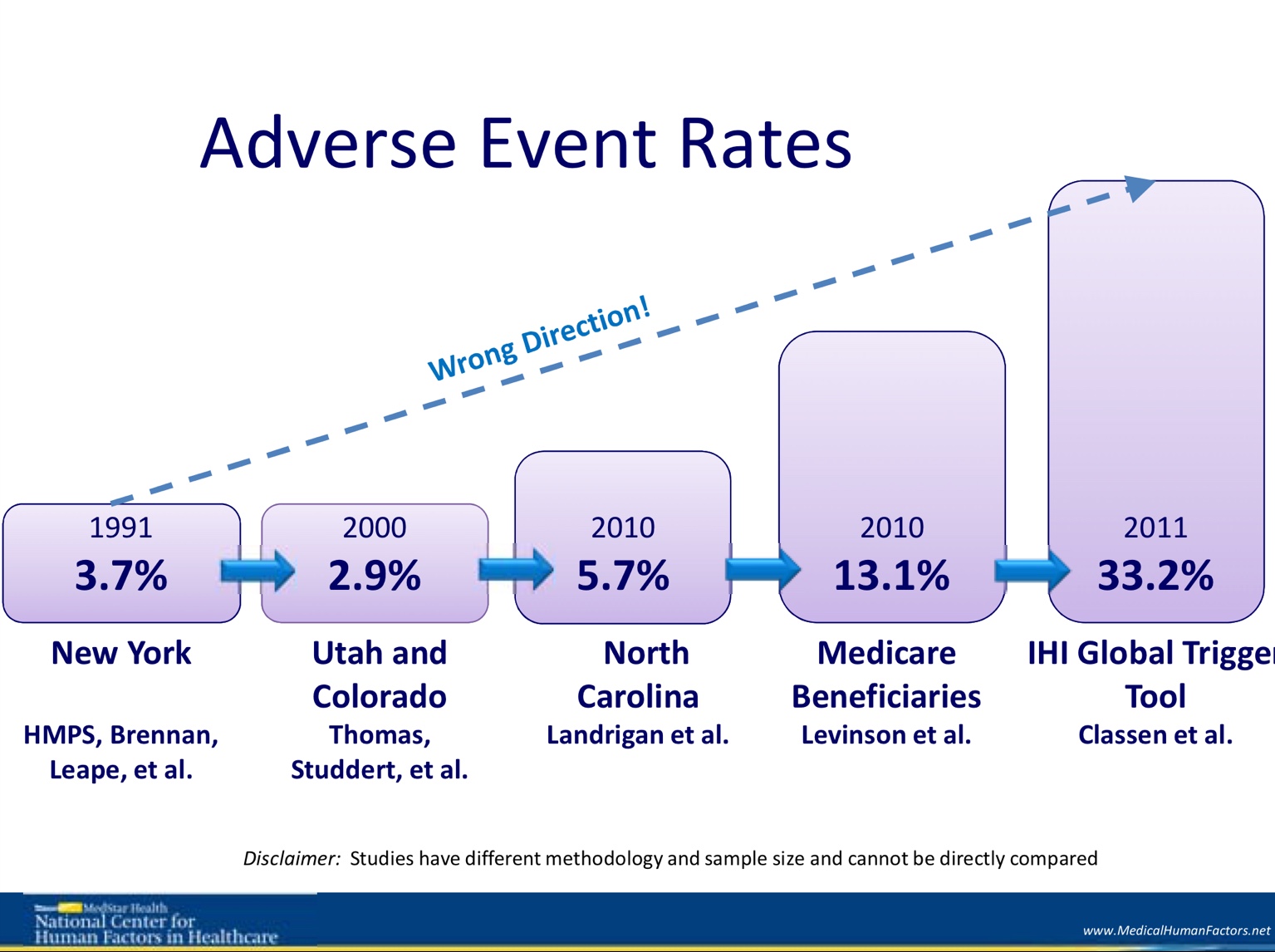
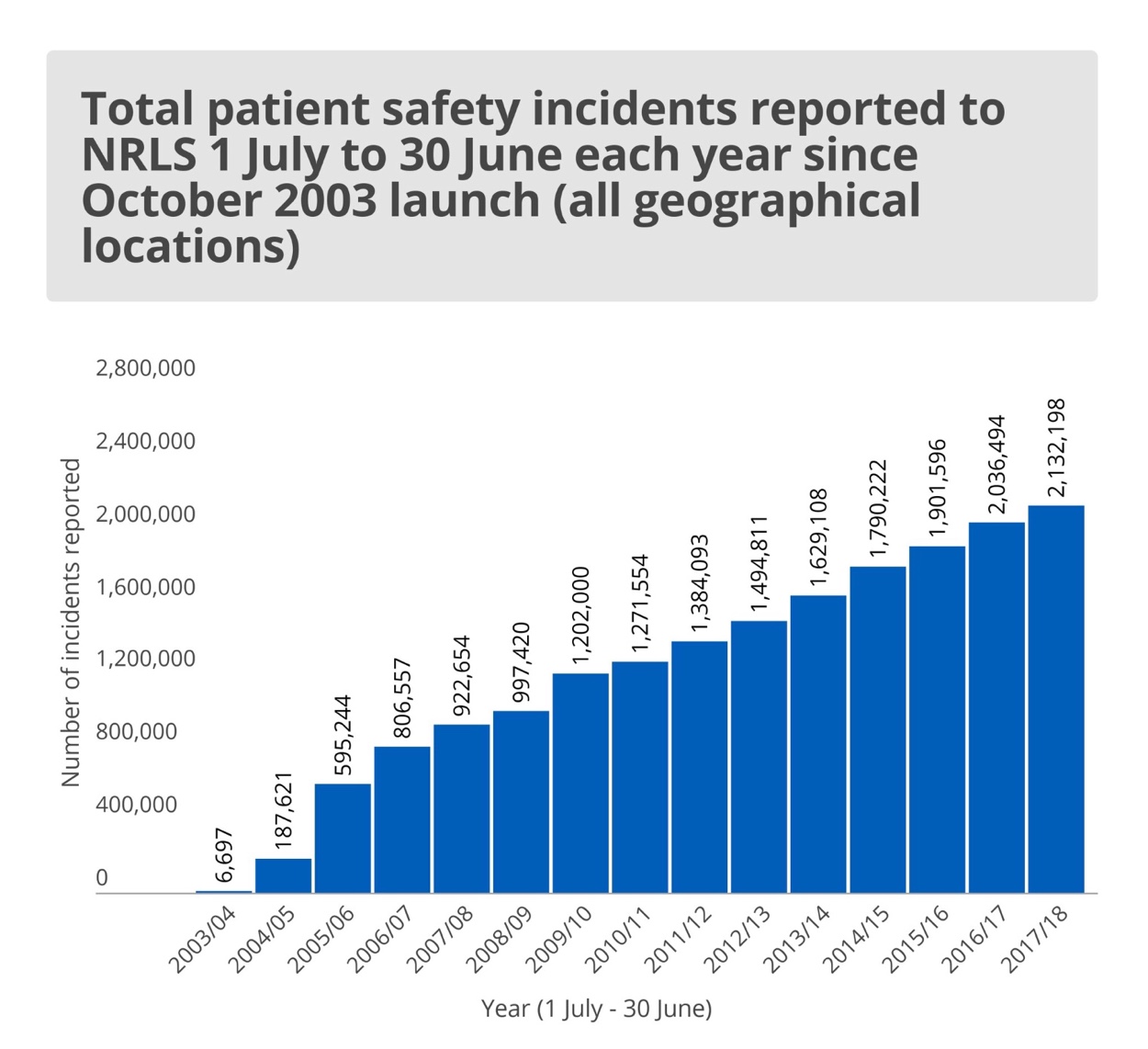
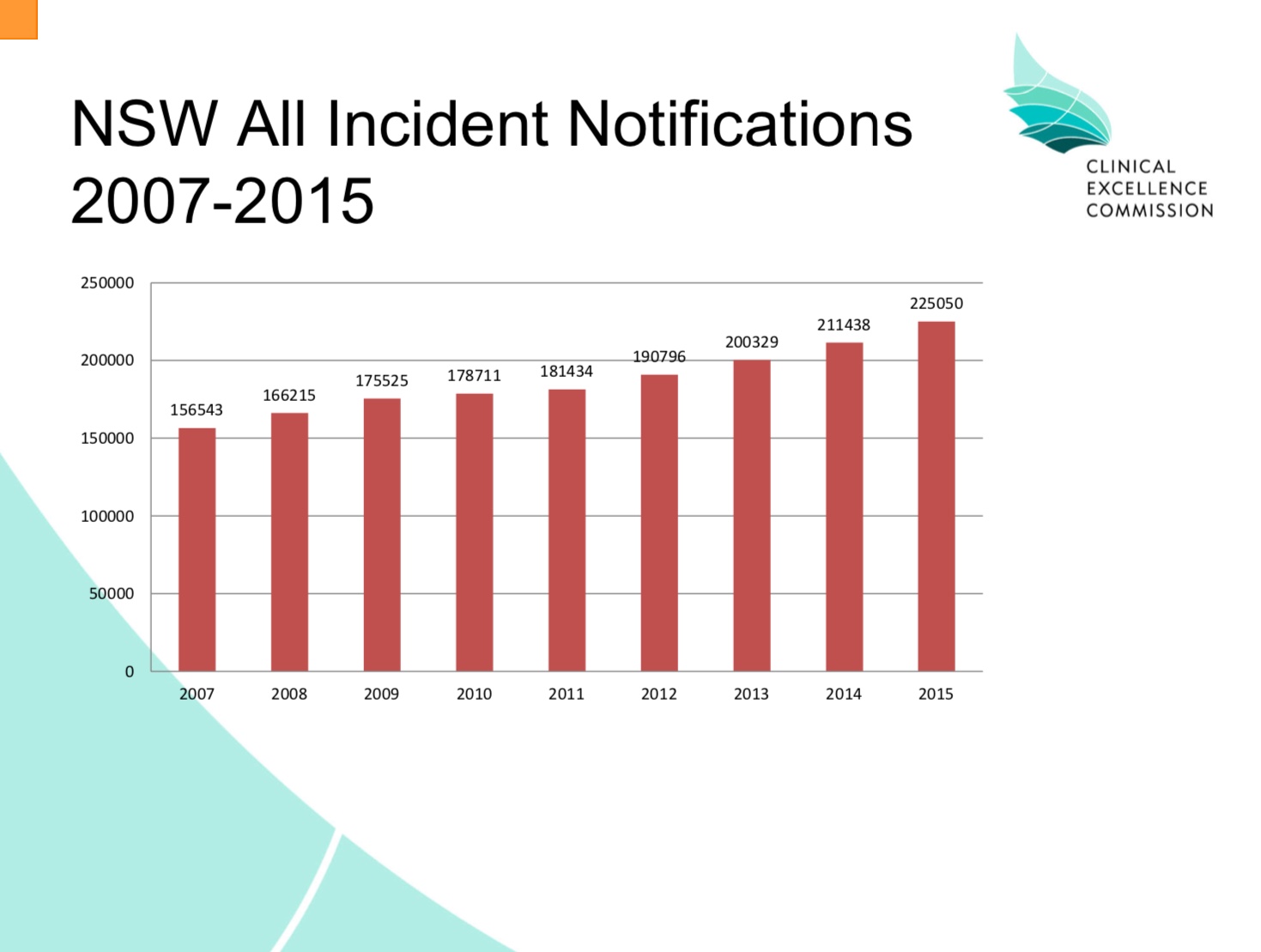
This phenomenon may be due to increased reporting habits yet may be due to these reports being entered into an industry which struggles to change and improve.
Consider the analogy where one teaches people as well as possible to pass an exam and then every day the exam is made just a little bit harder. It’s easy for us to accept that the failure rate will continue to climb.
In healthcare we have a front line staff who are highly trained and strive to do their very best, yet each day we make their work environment that little bit more complex with new drugs, equipment and systems.
The greatest gains in safety may be found in addressing the systems we interface with – designing them to reduce our chance of mistakes and also reduce the chance that when these inevitable mistakes occur they don’t lead to patient adversity.
Yet we have a culture in healthcare which can vehemently oppose change.
The #TheatreCapChallenge exposes this phenomenon for others to see – humans are notoriously bad at remembering names and here’s a simple solution to help overcome that – however intimidatory tactics may be used to denigrate those who might consider adopting something new.
Intimidation occurs not only on social media but amongst colleagues and within our work environments.
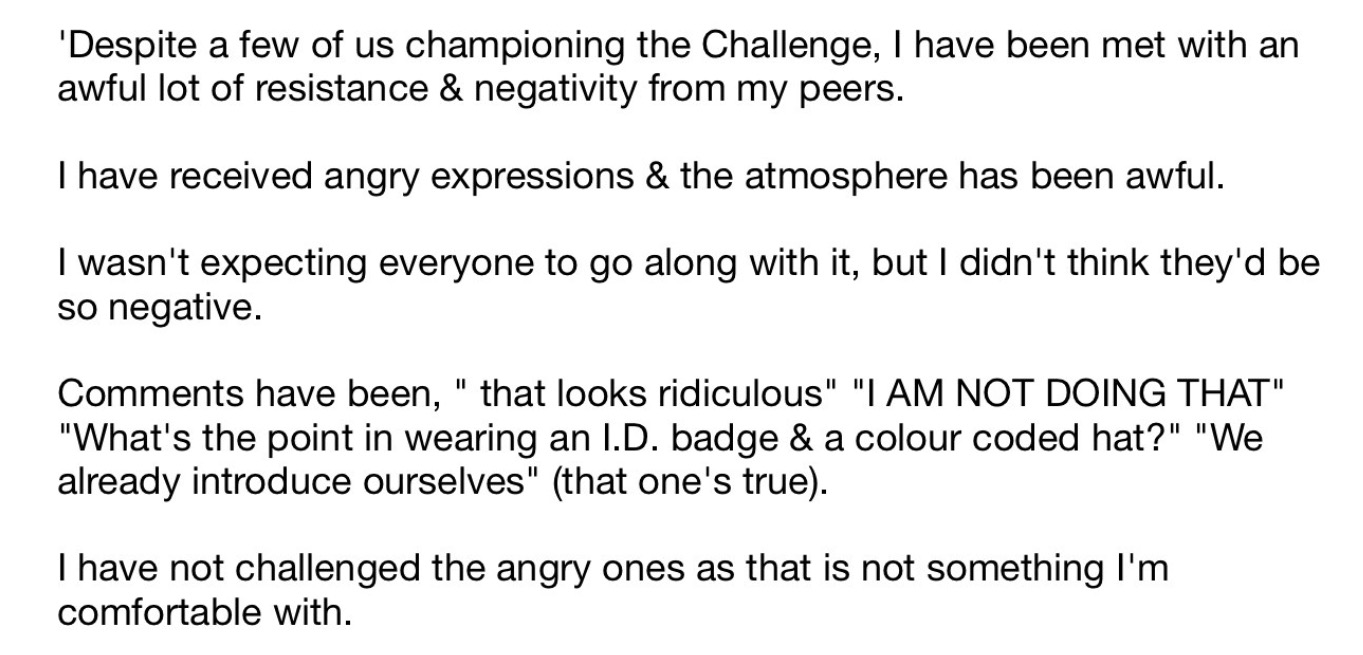
Name and role theatre hats can pretty much cost nothing and are obviously better for communication and teamwork. Further they’re well supported by the vast majority:
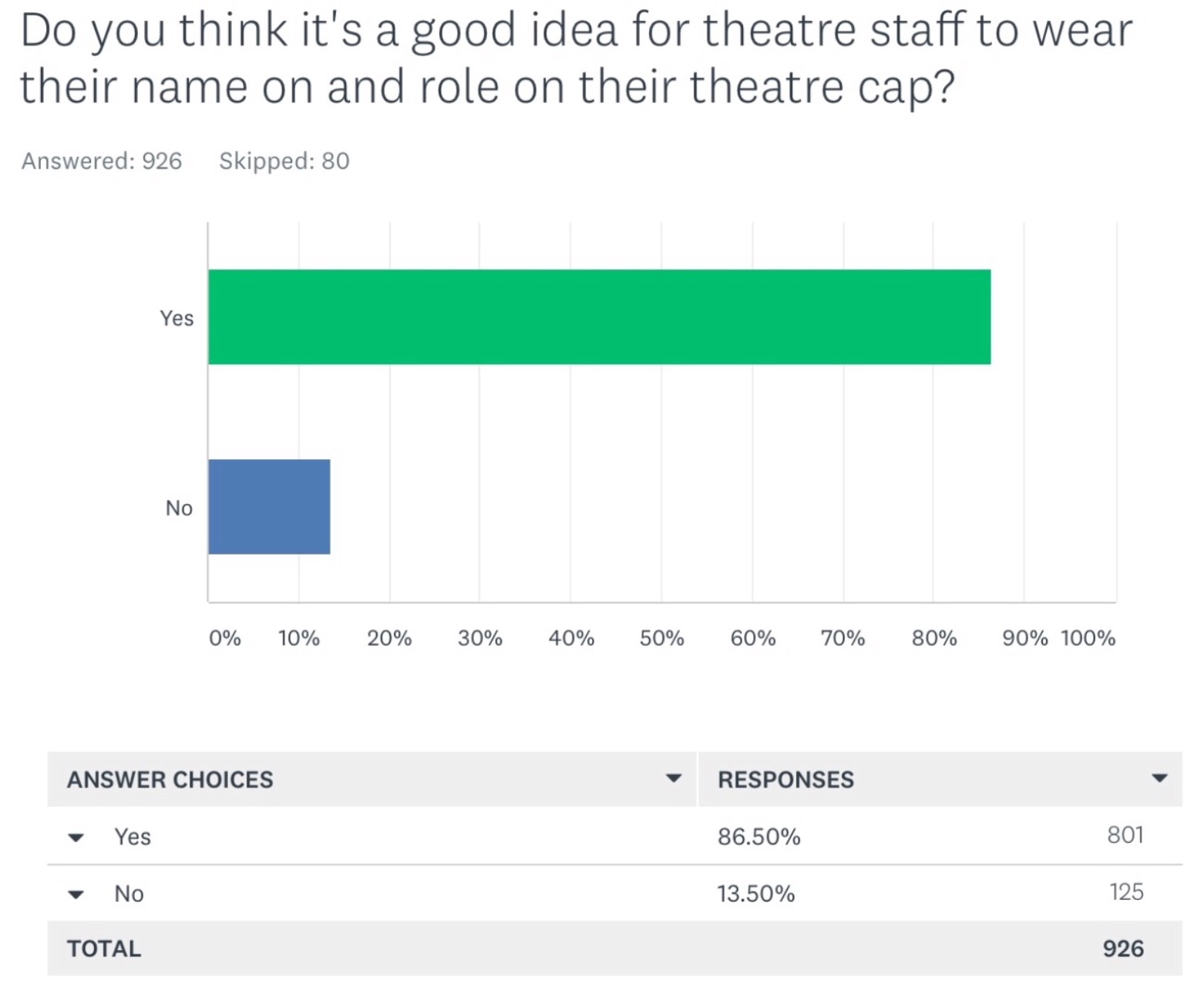
Our data shows unanimous support amongst those new to healthcare:
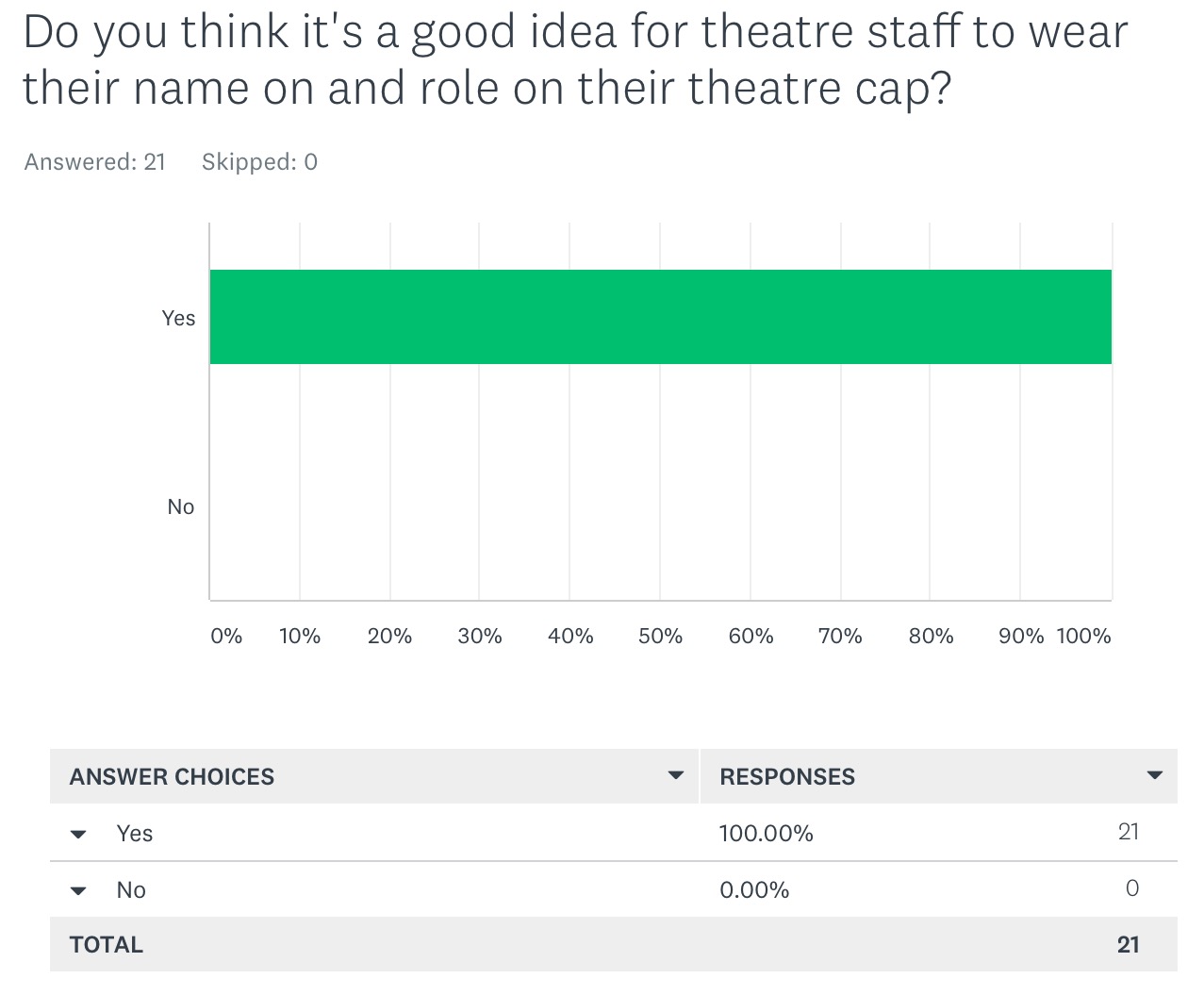
Unfortunately the initiative is most resisted by those perhaps with the greatest influence – the chart below indicates the subgroup ‘surgeons with greater than 20 years in healthcare’:
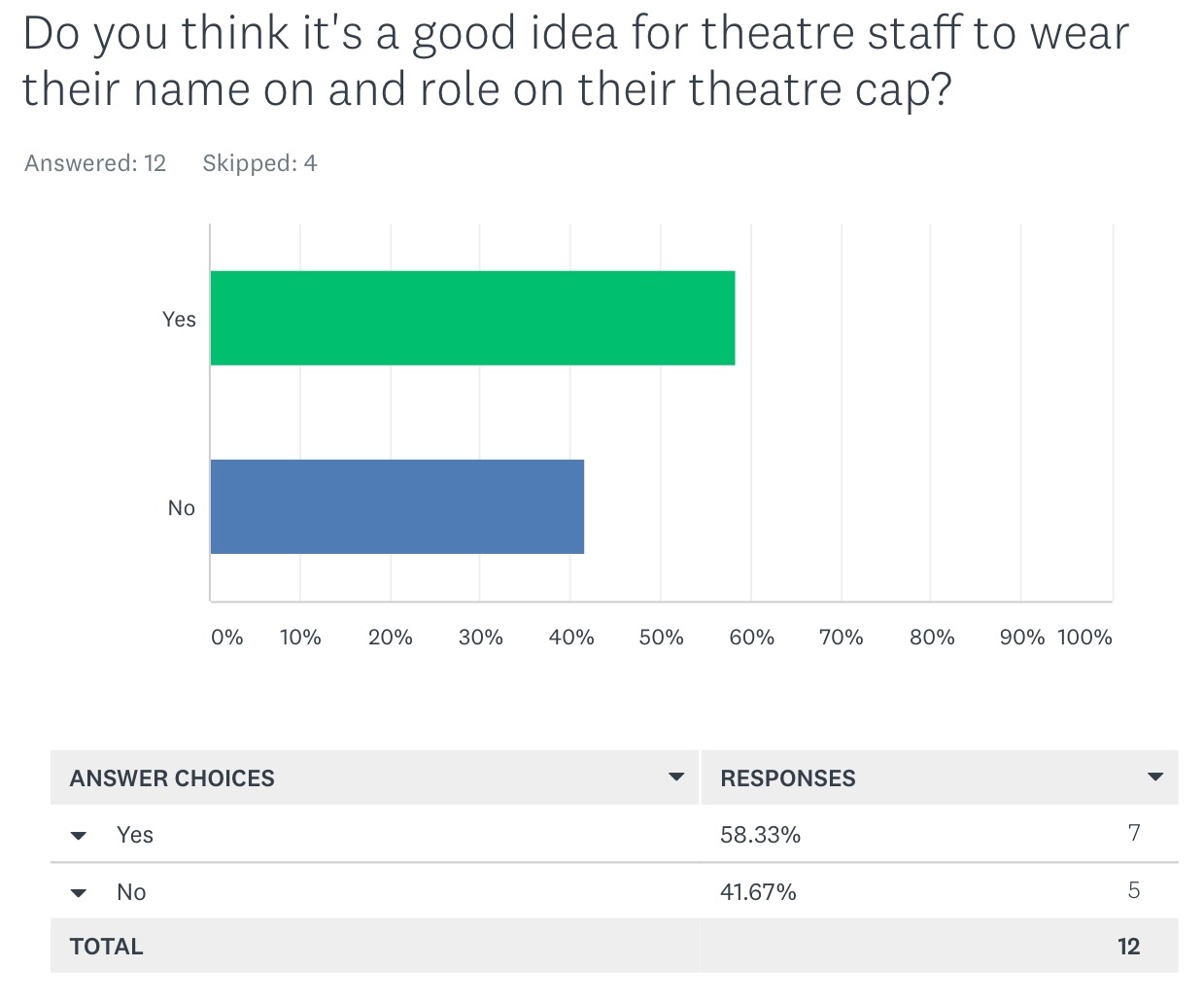
It’s understandable that those who’ve resided over the status quo for the longest may psychologically be the most resistant (see here). Further the impact of this resistance can perpetuate widely throughout the whole system – perhaps others not wanting to appear disrespectful (see here). However maybe it’s those resistant few who need to change the most if patient safety is to improve.
One can’t be part of the solution without first being part of the problem. We need to reflect deeply and consider how we’ve been conditioned to act like this.
It’s great to see that when we work collaboratively and openly we can help deliver the changes needed. Thanks to an international group of dedicated individuals focussed on multiple facets of name and role identification we’ve made significant progress – the council of the Australian Society of Anaesthetists recently endorsing the initiative: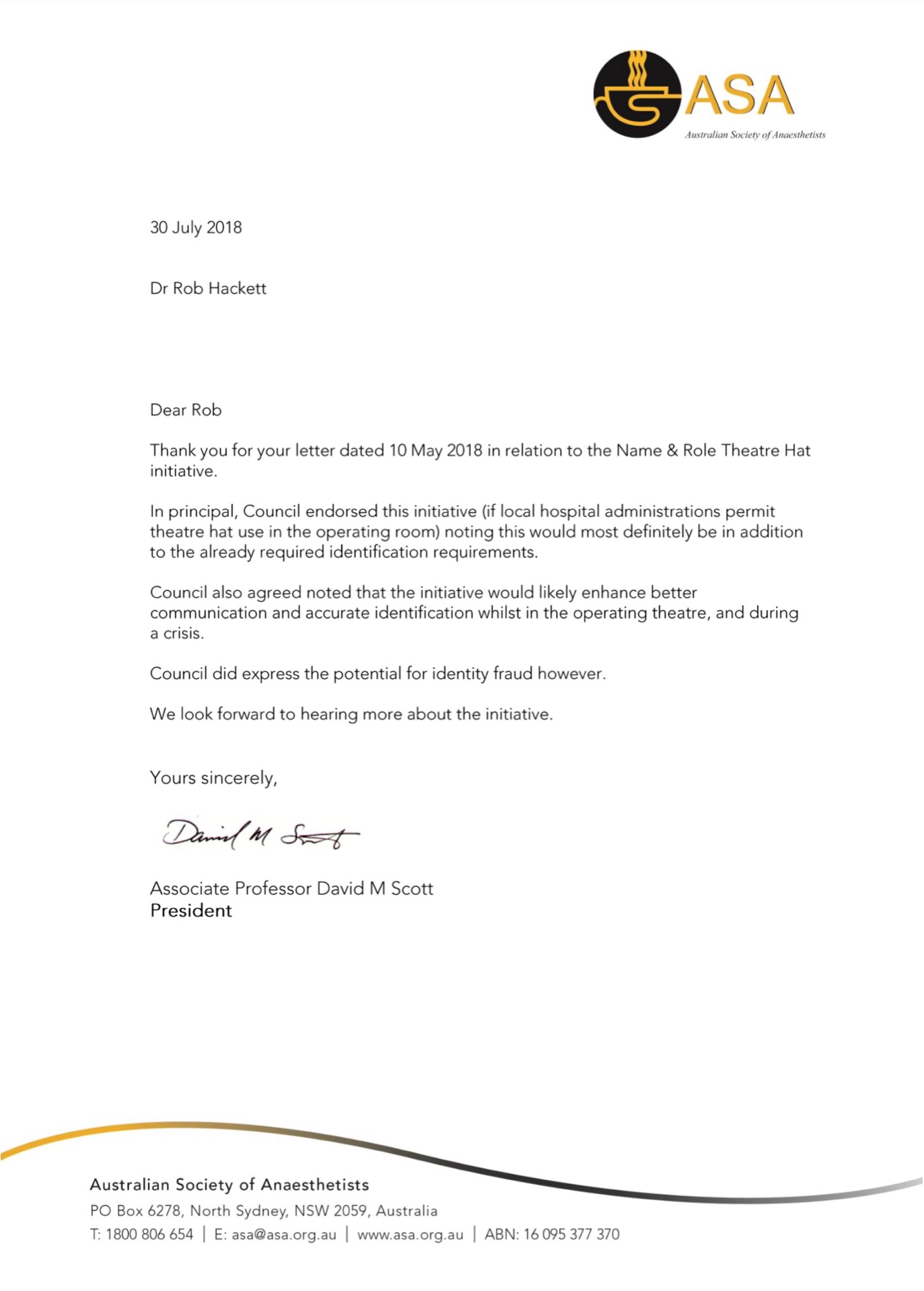
We look forward to others following suit – and ultimately perhaps having ‘clear staff name and role identification on their person’ added to the WHO surgical safety checklist.
Perhaps some may consider – ‘Why weren’t we doing this before?’ and also ‘What else should we have been doing which we weren’t already?’
There is so much more which could be optimised for patient safety to improve:
Standardise drug ampoules appearance removing look-a-like drugs
Standardisation of the Hospital Emergency Number
Bag Valve Masks with fixed Expiratory Valves as standard
Recall of hazardous oxygen cylinders
End tidal oxygen and capnography monitoring at all advanced airway management locations
These are just some of the projects we’re working on – there are many more initiatives in this project list attached (see here).
Further this link is by no means exhaustive – we’re well aware there will be many more hazards on the front line which we haven’t even recognised yet.
It’s unfortunate that at present we are having to lobby to remove obvious unnecessary front line hazards, yet this is where healthcare currently stands.
As we deliver on each of these projects at the same time we’ll be developing new frameworks for change. Through networked collaboration and radical transparency focussed on optimising our work environments we will see patient safety improve.
While some choose to deny the magnitude of the medical error problem perhaps it would be better to convert this energy to help deliver change and improvement.
“All men make mistakes, but a good man yields when he knows his course is wrong, and repairs the evil. The only crime is pride.”— Sophocles, Antigone.

One Comment